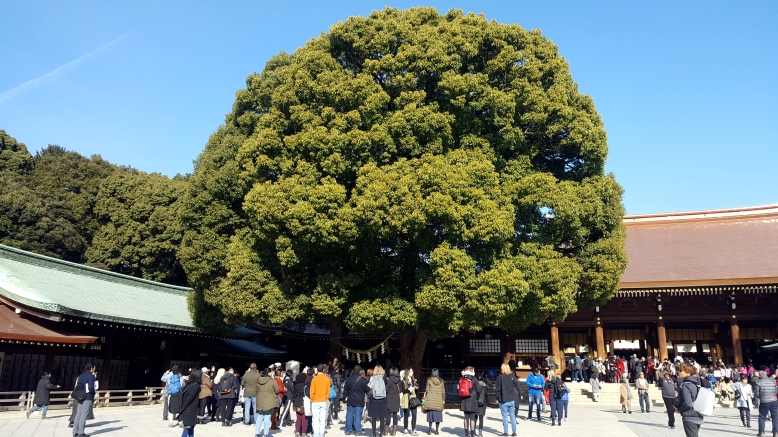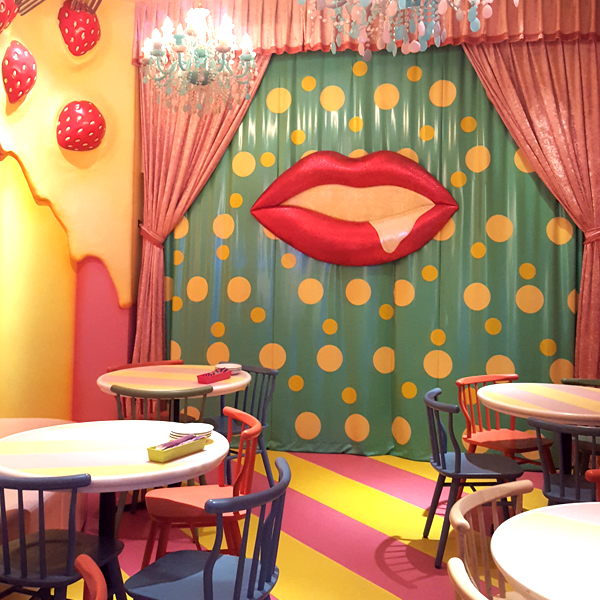Our last day in Japan was filled with tearful goodbyes. The friends that we had made on this journey were heading off to the airport and back to their respective homes in Canada and America. What better way to end off our tour than in peaceful reflection together in the city where we began?
A city’s serene oasis

The park that surrounds the shrine is made up of some 100,000 trees donated from regions across the country.
Meiji Shrine (Meiji Jingu) was built for the Emperor Meiji and the Empress Shoken in 1920, and it’s one of the most beautiful locations in all of Tokyo. A stone’s throw from the bustling Harajuku area and Yoyogi Park, sometimes what you need is a moment’s respite from city life.
Many of Japan’s customs emphasize a closeness between people and nature, as well as an appreciation of its beauty. Meiji Shrine is the embodiment of oneness with nature that many Japanese prize. Such a thing is actually quite rare. At the Sensoji Buddhist temple, the draw was the massive red lanterns adorning the gates and at Fushimi Inari Taisha it was the eye-catching vermilion torii. They were a sight to behold, but the beauty of nature could be quite overshadowed by those other structures.
What distinguishes Meiji Shrine is how well its immense structures can coexist harmoniously with the natural landscape. Towering torii arches made with Taiwanese camphor at the entrance to the grounds instantly stand out, but at the same time their designs are simple and reflect the character of the tree that it was.
As you enter the grounds, the feeling you get is like traveling back in time. The sounds of the city melt away as you follow a wide path deeper into a tranquil forest of evergreen trees. Even the large barrels of sake on display don’t seem out of place here.

Sacred “husband and wife” camphor trees in front of the main shrine building. Couples can pray here for strong, happy relationships.
In the main shrine building, we got a chance to receive blessings from a Shinto priest along with a whole room full of Japanese salary men — it was such a moment out of a J-drama. The priest chants a long string of prayers for people in attendance while shrine maidens perform a sacred dance ritual. It was a good note to end the official part of our trip on.
Monsters, Cafes, and Takeshita Shopping Street
After saying our farewells to the American party, we had some free time on our hands. Time to wander the streets of Tokyo. We were young and free in Harajuku, the center of Japanese youth culture and fashion! We went off to Takeshita Street, a famous street in Harajuku lined with fashion boutiques, cafes and restaurants. Here, we exhausted ourselves trying on beautiful Liz Lisa outfits and shopping around for hip jewelry.
And one can’t go to the land of themed cafe without visiting at least one! Butlers, cats, maids, hedgehogs, Square Enix lovers — there’s a cafe here for everyone here. At a friend’s recommendation, we ended up having lunch at the Kawaii Monster Cafe in Harajuku.

This cafe serves up eerily toxic food as well as some frightening live entertainment by dancers and mascots.
The admission fee for this particular cafe is 500 yen. Choose from one of several themed rooms in the cafe. Watch as monsters and dancers make their way around during performances! Order everyday food items such as chicken and waffles and BLT — with a monstrous twist — food colouring. I ordered a tapioca drink (very diluted) and an order of chicken and waffles, but the food was a tad overpriced for what we got.
At the end of the day, it’s obvious that you go to these places more for the novelty than anything else. My advice? Come here if you get bored of cat cafes, but beware. The food bill can be quite chill-inducing.